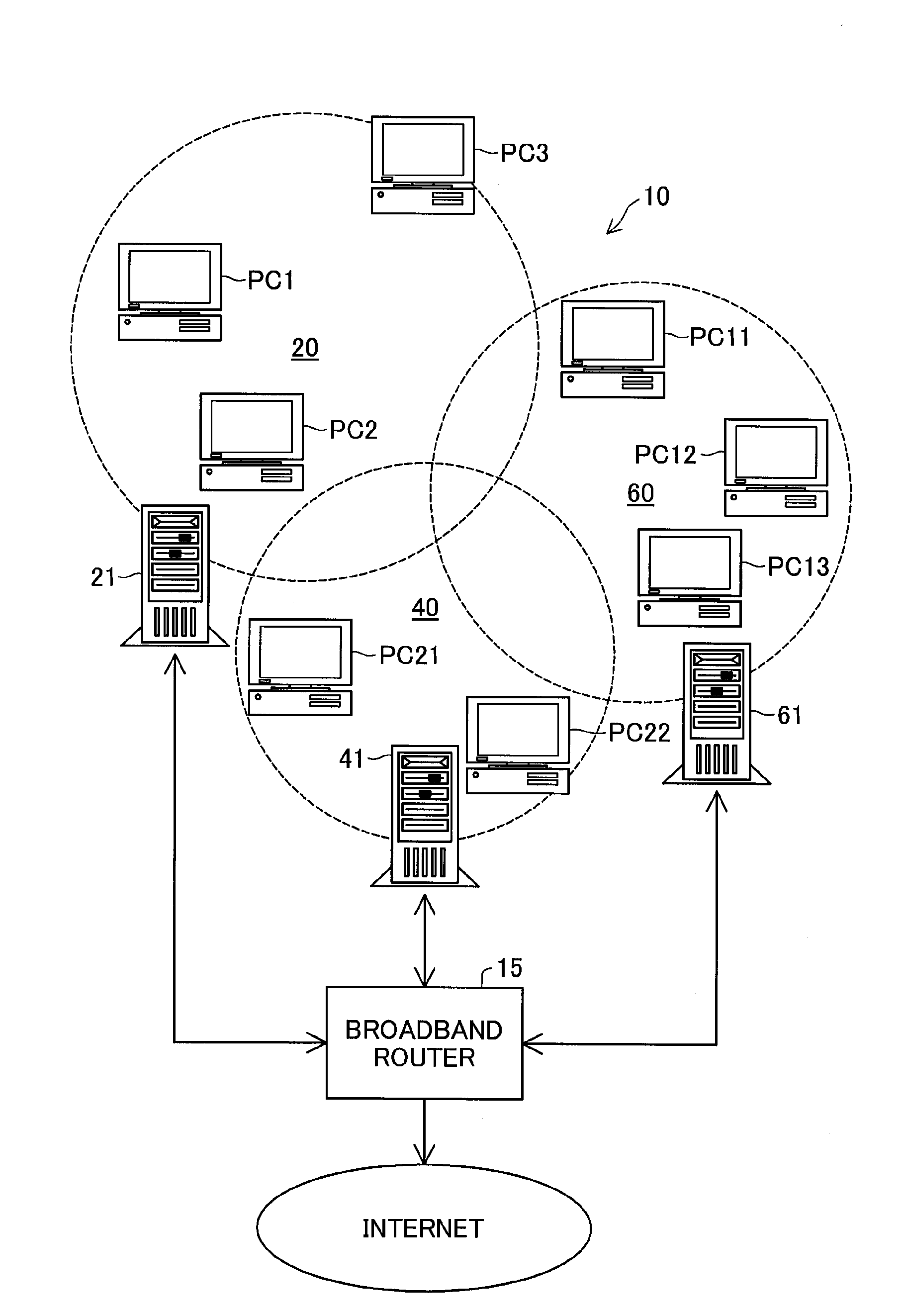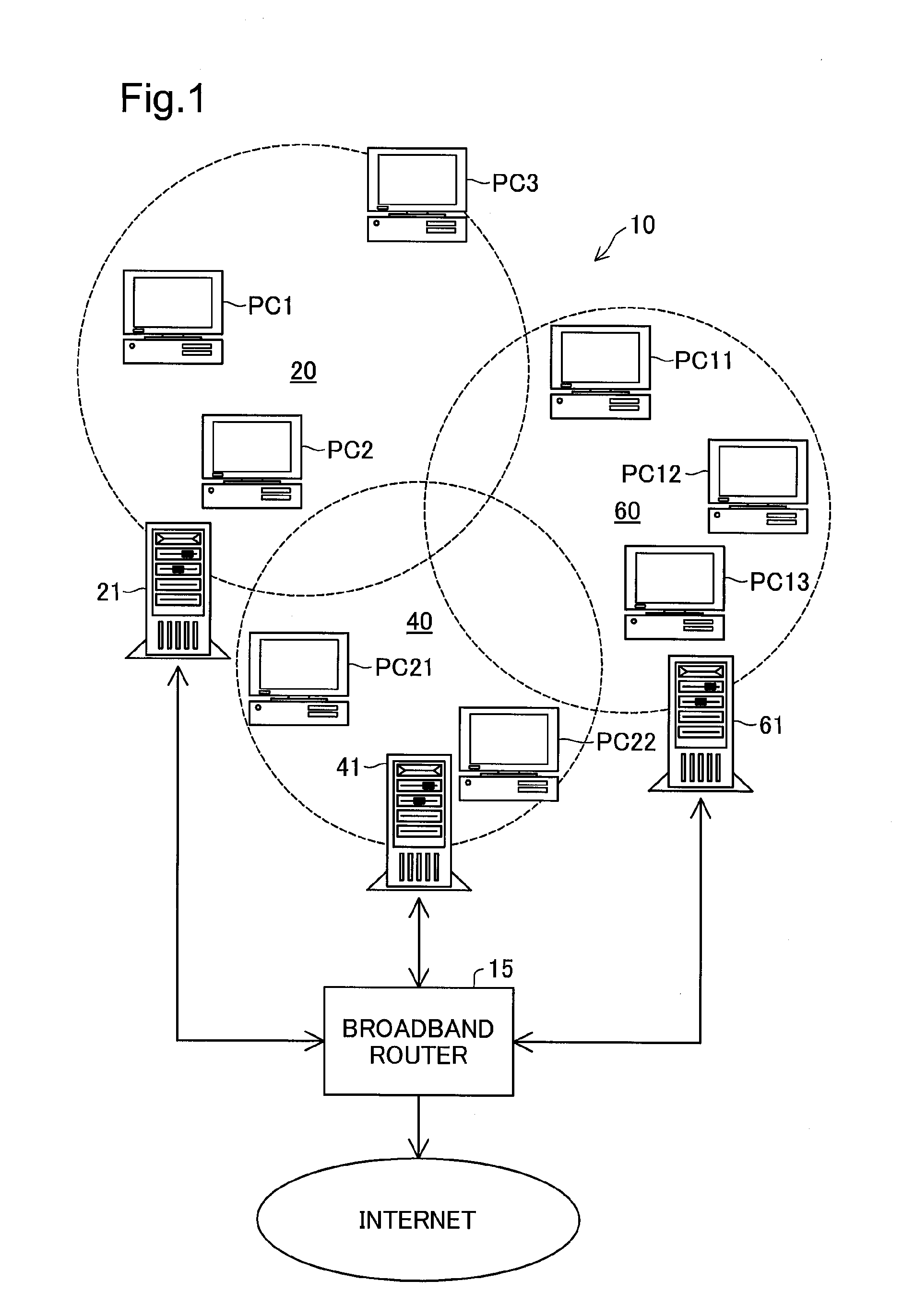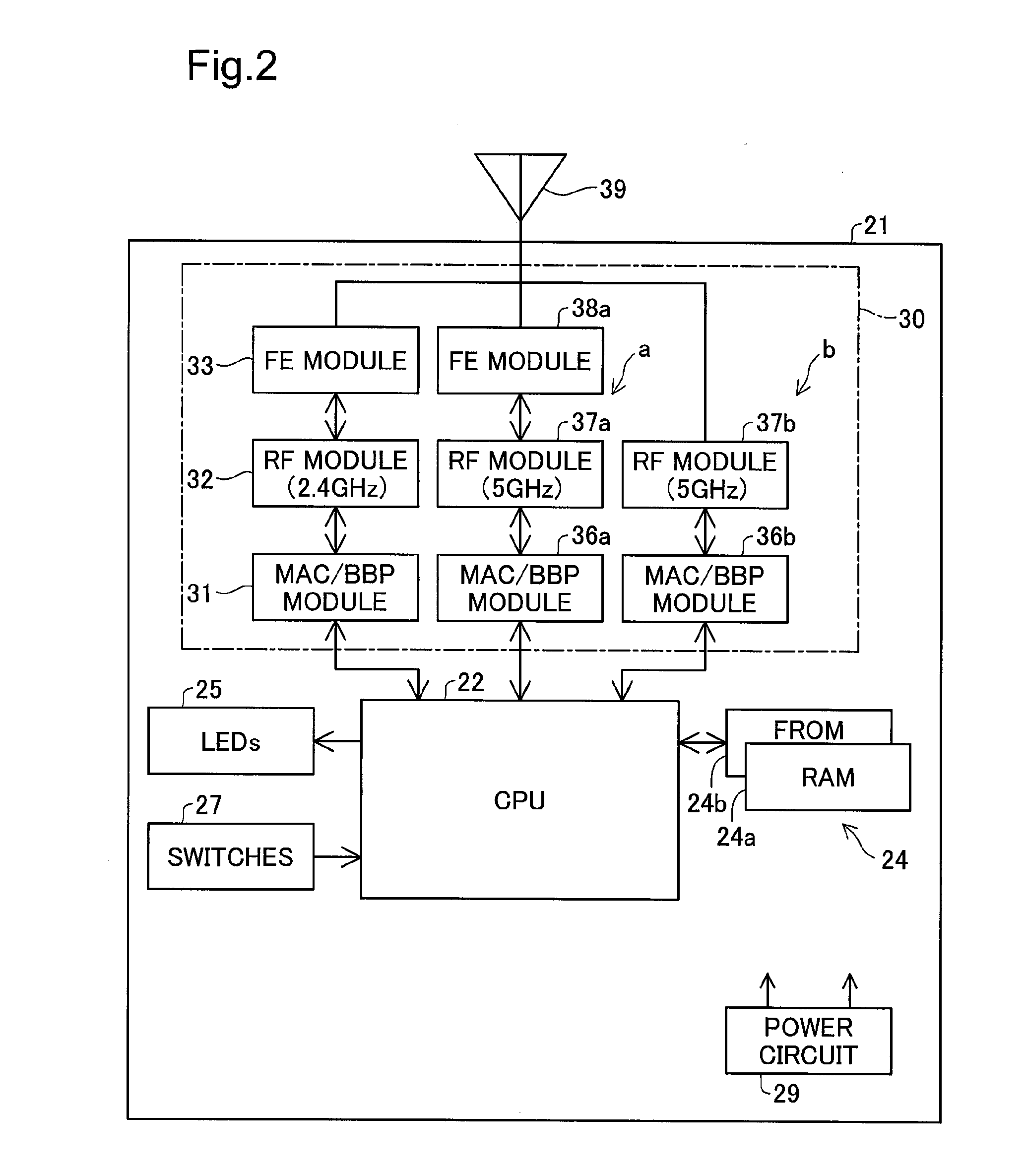Wireless communication device, wireless communication system, and wireless communication method
- Summary
- Abstract
- Description
- Claims
- Application Information
AI Technical Summary
Benefits of technology
Problems solved by technology
Method used
Image
Examples
first embodiment
(1) First Embodiment
[1] Hardware Configuration of First Embodiment
[0038]One mode of carrying out the invention is described below with reference to the accompanied drawings. FIG. 1 is a diagrammatic representation of a system configuration of a wireless LAN system 10 in a first embodiment according to the invention. As illustrated, this wireless LAN system 10 includes a broadband router 15 connecting with an external network, for example, the Internet, and multiple wireless LAN access points 21, 41, and 61 respectively having wired connections to the broadband router 15. The respective access points 21, 41, and 61 are used to establish wireless LANs 20, 40, and 60 that adopt different basic service sets (BSS). These access points 21, 41, and 61 are provided to establish wireless LANs in different areas of a relatively large site for a facility, such as a school or a company. The wireless LANs 20, 40, and 60 have partial overlaps in the coverage of wireless communication, due to the ...
second embodiment
(2) Second Embodiment
[1] Communication Control in Second Embodiment
[0067]A wireless LAN system of a second embodiment according to the invention is described below. The wireless LAN system of the second embodiment has substantially the same configuration as that of the first embodiment shown in FIGS. 1 and 2, except part of the processing performed by the access points 21, 41, and 61. Only the different points from the first embodiment are discussed below.
[0068]The flowchart of FIG. 6 mainly shows a different part of the communication control routine of the second embodiment performed by an access point (for example, the access point 21) from that of the first embodiment. The flowchart of FIG. 7 mainly shows a different part of the monitoring process routine of the second embodiment from that of the first embodiment. As shown in the flowchart of FIG. 6, in the case of non-detection of radar / radio signals, the access point 21 of the second embodiment does not immediately return to th...
PUM
 Login to View More
Login to View More Abstract
Description
Claims
Application Information
 Login to View More
Login to View More - R&D
- Intellectual Property
- Life Sciences
- Materials
- Tech Scout
- Unparalleled Data Quality
- Higher Quality Content
- 60% Fewer Hallucinations
Browse by: Latest US Patents, China's latest patents, Technical Efficacy Thesaurus, Application Domain, Technology Topic, Popular Technical Reports.
© 2025 PatSnap. All rights reserved.Legal|Privacy policy|Modern Slavery Act Transparency Statement|Sitemap|About US| Contact US: help@patsnap.com



